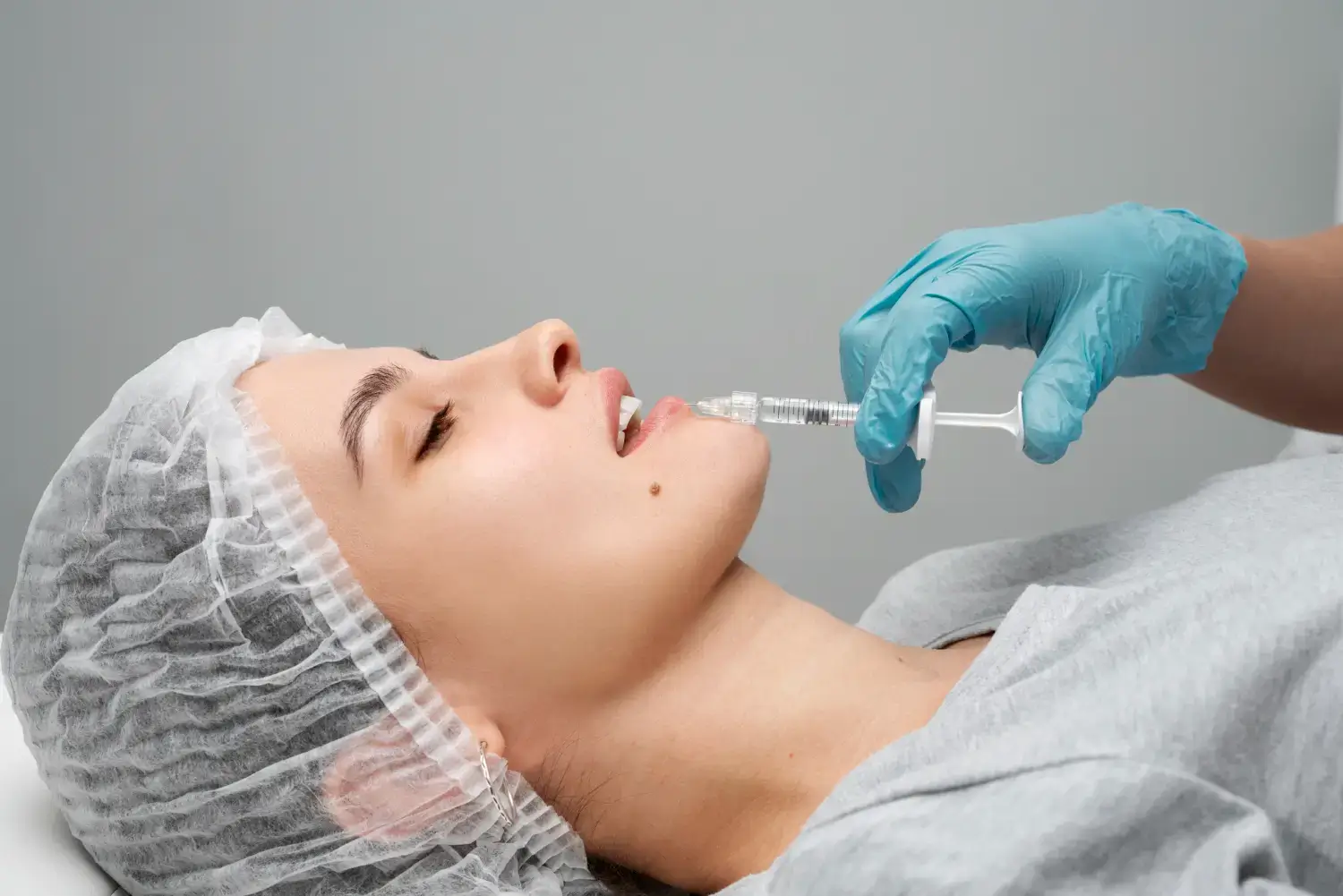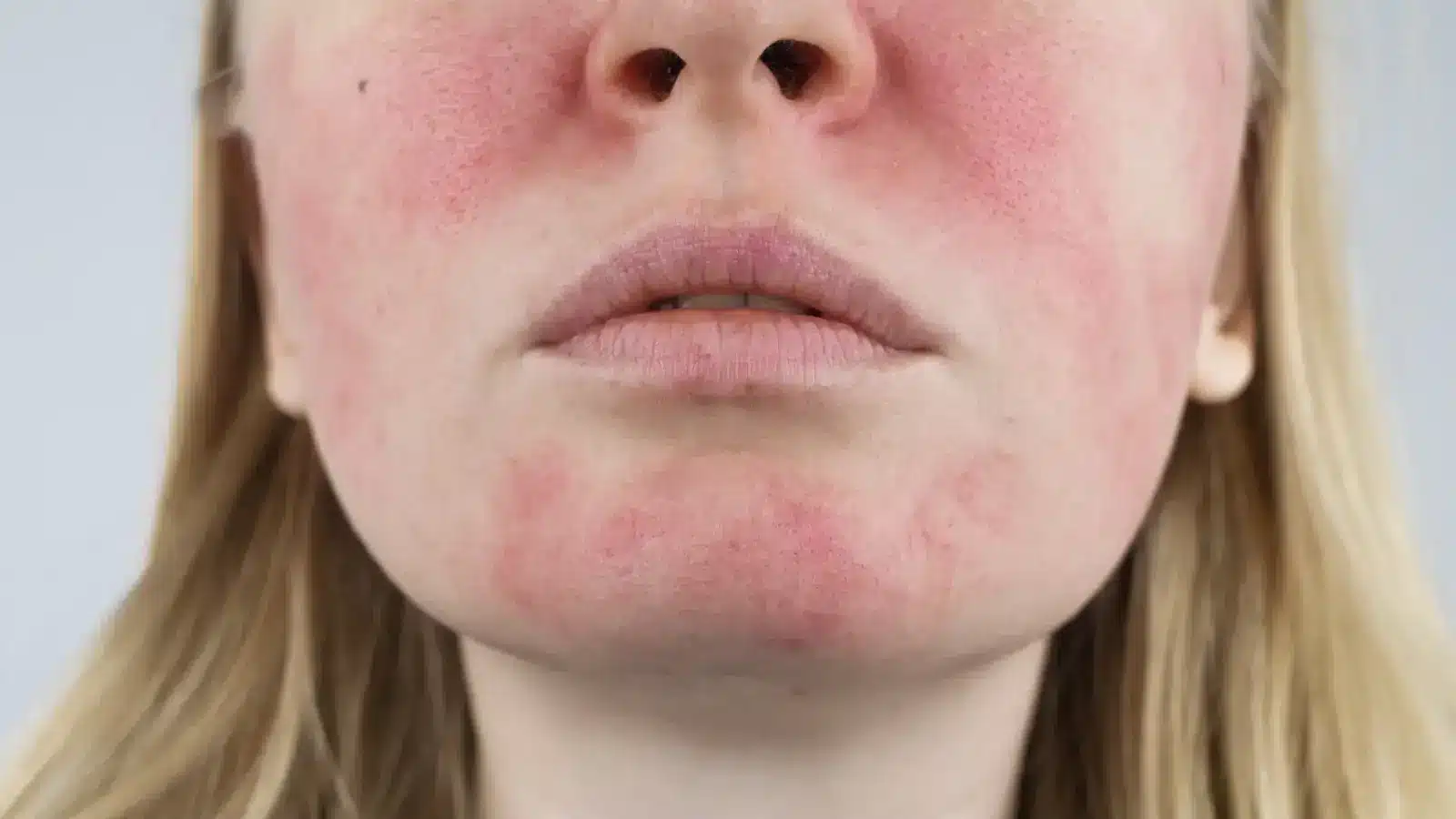
Hyaluronic acid (HA) fillers have gained popularity for their effectiveness in facial rejuvenation. A 2021 study found that HA fillers provided significant aesthetic improvements in 93.9% of treatments over a 12-month period.
Among these HA fillers, Revofil stands out with its innovative formulations designed to reduce signs of aging while achieving natural-looking results. Revofil offers a range of products, including Revofil Plus for lips and Revofil Fine for fine lines, each tailored to address specific aesthetic concerns.
In this article, we will explore the potential side effects of Revofil fillers, what to expect after treatment, and how to manage any adverse reactions effectively.
Key Takeaways
- Redness, swelling, bruising, and tenderness are typical after Revofil filler injections but usually subside within a few days.
- Rare complications include lumps, infections, and allergic reactions requiring prompt medical attention.
- Proper injection techniques, thorough patient preparation, and diligent post-treatment care can minimize side effects and ensure the best outcomes.
- Practitioners must be skilled in identifying and managing complications and recognize when to refer patients for specialized care.
- Revofil fillers, including specialized options like Revofil Ultra, are valued for their effectiveness in treating facial concerns. Results last 9–12 months.
About: Doctor Medica is your trusted supplier of top-quality dermal fillers, viscosupplements, and more for your medical practice. We offer genuine products from leading brands at the lowest prices. Contact Doctor Medica today to order Revofil online.
Common Side Effects of Revofil Fillers

When considering any aesthetic treatment, it’s essential to understand the potential side effects that may arise. For Revofil fillers, most side effects are mild and temporary, with many patients experiencing minimal discomfort during the recovery period.
- Redness, Swelling, and Bruising: These reactions are typically mild and temporary, usually resolving within a few days to a week. Redness occurs as the skin reacts to the needle and the filler material, while swelling and bruising are results of minor trauma to the blood vessels during the injection process.
- Tenderness at the Injection Site: This is a natural response to the injection and the presence of the filler material under the skin. The tenderness usually subsides within a few days, and over-the-counter pain relievers can help manage the discomfort if necessary.
Less Common Side Effects and Complications
While common side effects are often manageable and temporary, some patients may experience less common and more serious complications. Recognizing these less common side effects is crucial for timely and effective management.
- Lumps and Nodules: Patients may sometimes develop lumps or nodules under the skin following Revofil filler injections. These can occur if the filler is not evenly distributed or the body’s immune response encapsulates the material. They may need to be massaged by a healthcare professional or even dissolved with an enzyme treatment.
- Infections: Symptoms of infection include increased redness, swelling, warmth, and pain around the injection site, and sometimes, the presence of pus. Prompt medical treatment is necessary to manage infections effectively.
- Allergic Reactions: Some individuals may experience allergic reactions to the filler material, though this is uncommon with Revofil due to its biocompatible formulation. Signs of an allergic reaction can include redness, itching, and swelling beyond the typical post-injection symptoms.
Minimizing Side Effects Through Proper Injection Techniques and Patient Preparation

Proper injection techniques are essential for minimizing side effects with Revofil fillers. Practitioners should be well-trained in their application to ensure even distribution and reduce risks like lumps or infections. A gentle, precise approach also helps minimize tissue and blood vessel trauma.
Patient preparation significantly impacts treatment success and side effect management. To reduce bruising risk, patients should avoid blood-thinning medications and supplements, such as aspirin or fish oil, for at least a week before the procedure. Discussing medical history and allergies with the practitioner beforehand ensures a safer, more tailored treatment.
Post-treatment care is equally important. Following aftercare instructions, patients can recover quickly and maintain the best possible results from their Revofil filler treatment.
Post-Treatment Care to Manage Side Effects

Even with the best preparation and techniques, some side effects may still occur. Implementing a comprehensive aftercare plan helps patients recover quickly and maintain the benefits of their treatment.
Patients should avoid touching or massaging the treated area for the first 24 hours and refrain from strenuous activities, heat exposure, and alcohol consumption for at least 48 hours. Applying a cold compress or keeping the head elevated can help reduce swelling and bruising.
Maintaining open communication with patients after treatment also helps ensure any lingering side effects are promptly addressed. Regular follow-up appointments allow practitioners to monitor progress and make adjustments if necessary. Reinforcing aftercare instructions during these visits helps patients maintain their results and minimize risks.
Handling Complications and When to Refer Patients for Further Care
Despite all precautions, complications can still occur, making it essential for practitioners to be equipped to manage these situations and recognize when referral to a specialist is necessary. Clear protocols and informed decision-making are crucial to ensuring patient safety and satisfaction.
In-office management is a key responsibility for practitioners. They should have the necessary tools and treatments readily available to address issues such as infections, allergic reactions, or lumps. It is equally important to educate patients about potential side effects, like redness or swelling, and advise them on when to seek further care.
Patients may also ask questions like, “What is Revofil Ultra used for?” Practitioners should explain that it is primarily designed for deeper wrinkles and volume restoration, highlighting their expertise in effectively managing treatments.
For more severe complications, such as persistent infections, severe allergic reactions, or unresolved issues, referral to a specialist is often required. Recognizing the signs early and acting promptly ensures the best outcomes for patients while maintaining the highest standards of care.
Conclusion
Revofil fillers are a trusted option in aesthetic treatments, offering natural-looking results and long-lasting benefits. While most side effects are mild and manageable, complications can arise, highlighting the importance of proper injection techniques, patient preparation, and diligent post-treatment care. By prioritizing these factors, both practitioners and patients can achieve optimal outcomes while minimizing risks.
For anyone considering Revofil treatments, understanding potential side effects and how to address them is crucial. With the guidance of skilled medical professionals, patients can enjoy the transformative benefits of Revofil with confidence.
FAQs
1. What is Revofil Filler?
Revofil is an advanced dermal filler combining hyaluronic acid with biomimetic peptides. It is designed for facial rejuvenation, contouring, and volume enhancement.
2. How long do Revofil filler results last?
Results typically last between 9 to 12 months, depending on the treatment area, individual metabolism, and lifestyle factors.
3. Are Revofil fillers safe?
Yes, Revofil fillers are considered safe when administered by qualified professionals. Common side effects like redness or swelling are mild and temporary.
4. What is the recovery time after Revofil treatment?
Recovery time is minimal. Most side effects, such as swelling or redness, subside within a few days, allowing patients to resume their normal activities quickly.
References
Bhojani-Lynch T, Deckers A, Ohanes O, Poupard K, Maffert P. A Prospective, Observational Registry Study to Evaluate Effectiveness and Safety of Hyaluronic Acid-Based Dermal Fillers in Routine Practice: Interim Analysis Results with One Year of Subject Follow-Up. Clinical Cosmetic and Investigational Dermatology. 2021;Volume 14:1685-1695. doi:10.2147/ccid.s329415
Uwe Wollina and Alberto Goldman. (2011). Hyaluronic Acid Dermal Fillers: Safety and Efficacy for Treating Wrinkles, Aging Skin, Body Sculpturing and Medical Conditions. Clinical Medicine Reviews in Therapeutics, 3, 107–121. https://doi.org/10.4137/cmrt.s6928
Related Articles
Joanna Carr
The Art of Lip Augmentation: Achieving Beautiful Results with Hyacorp Filler
Explore the art of lip augmentation with Hyacorp filler. Achieve beautiful results with Doctor Medica's high-quality products.
Joanna Carr
Treating The Aging Neck And Decollete
Have an interest in learning about Treating The Aging Neck And Decollete? Browse Doctor Medica's extensive archive of blog postings.
Joanna Carr
How to Reduce Discomfort and Bruising from Filler Injections
Interested to learn more about How to Reduce Discomfort and Bruising from Filler Injections? Browse Doctor Medica's comprehensive listing of blog post...


